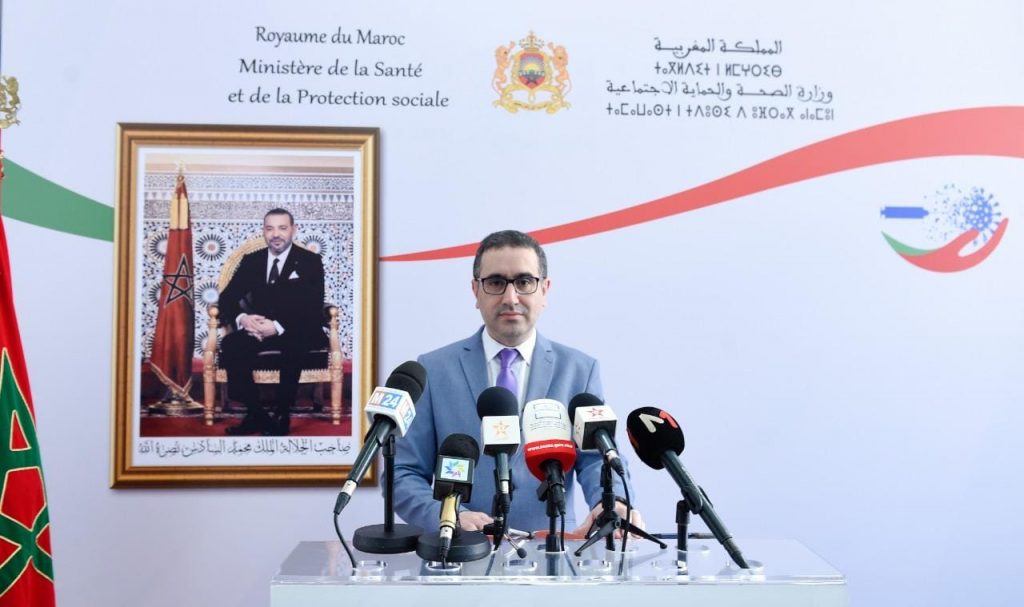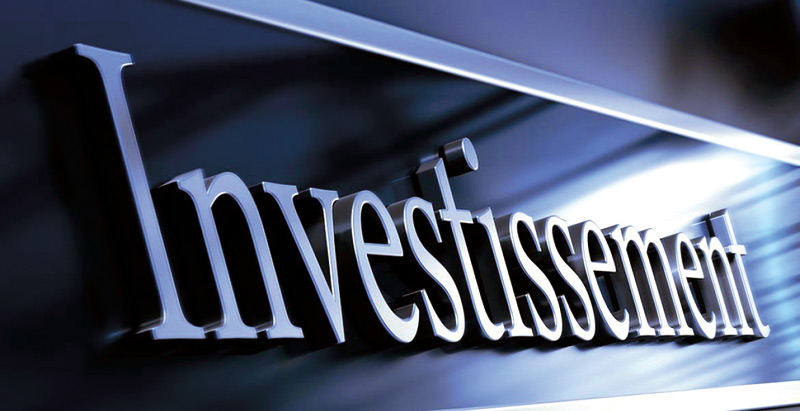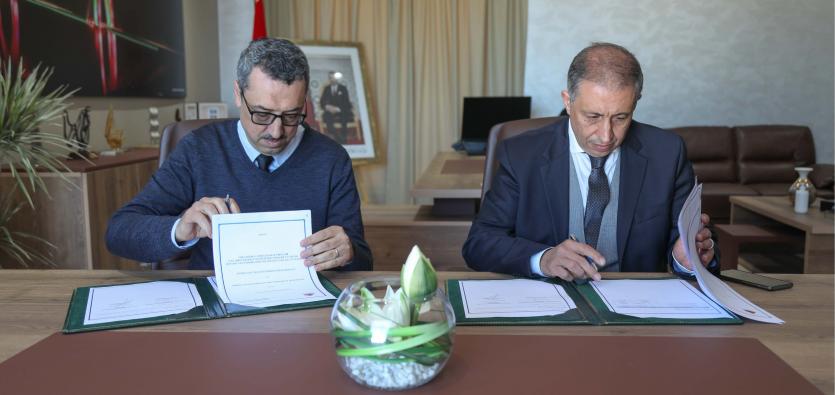https://arab.news/v4s9x
CHICAGO: Longlisted for the International Prize for Arabic Fiction in 2017, and published in English for the first time in July this year, Yassin Adnan’s novel “Hot Maroc” is a glimpse into Marrakech, Morocco through the eyes Rahhal Laâouina, a university student desperate both for the degree that will allow his life to match the legend he has made of himself in his mind, and to make his father proud. While this contemporary story begins with Rahhal’s journey, it is also a tale of the generations since Morocco’s independence, university life, identity politics, protests, and the Internet. When Rahhal learns that he can control certain aspects of life using the latter, he becomes obsessed.
Rahhal, named after a martyr, sees his counterparts as animals and himself as a squirrel. It helps him make sense of the city around him. From Cadi Ayyad University in Marrakech, where he is studying for a degree in Arabic language and literature from the School of Humanities and Social Sciences, Rahhal can put aside his upbringing in the Ain itti neighborhood outside the city walls. He can join the National Union of Students in Morocco and can drown himself in a narrative that he lives in dreams but that plays out quite differently in real life. When he finds himself managing the Atlas Cubs Cyber Café, Rahhal revels in hiding behind his anonymity in the virtual world and pursuing outcomes he could never imagine in real life.
With Morocco’s rich history as a backdrop and set against a modern-day distrust among Marrakech’s residents of secret police, politicians, and each other, Adnan creates a space where a person’s identity and past can mean everything in the real world and nothing on the Internet. Online, every opinion, if it garners enough attention, matters, and Rahhal does not let opportunity pass him by. Adnan’s main character can steer the narrative to fit his liking, as long as he is careful.
Adnan introduces every character with a wit and ease, their eccentricities and most intimate desires laid out on the page. Each personality is carefully crafted to create an extraordinary stage of characters. Translated into English by Alexander E. Elinson, Adnan’s novel highlights the Red City’s modern and ancient stories, its heroes and villains, its takers and givers, creating a seamless line between its inhabitants and their city, paying homage to Marrakech and its bustling streets, resolute residents, and cyber avenues.
WASHINGTON: Women vaccinated against Covid-19 saw a slight delay in their period of almost a day compared to those who were unvaccinated, a US government-funded study said Thursday.
But the number of days of bleeding was not affected, according to the research carried out on nearly 4,000 individuals and published in “Obstetrics & Gynecology.”
Lead author Alison Edelman of the Oregon Health & Science University told AFP the effects are small and expected to be temporary, a finding that is “very reassuring” as well as validating for those who experienced changes.
The study can also help counter anti-vaccine misinformation on the topic, which is rampant on social media.
The slight increase in menstrual cycle length is not clinically significant. Any change of fewer than eight days is classified as normal by the International Federation of Gynecology and Obstetrics.
Period cycles generally last about 28 days, but the precise amount varies from one woman to another, as well as within an individual’s lifetime. It can also change during times of stress.
For their study, the scientists analyzed anonymized data from a fertility tracking app, among women aged 18 to 45 who were not using hormonal contraception.
Some 2,400 participants were vaccinated — the majority with Pfizer (55 percent), followed by Moderna (35 percent) and Johnson & Johnson (seven percent).
About 1,500 unvaccinated women were also included as a comparison.
Among the vaccinated group, data was collected from three consecutive cycles before vaccination and from three more consecutive cycles, including the cycle or cycles in which vaccination took place.
For unvaccinated individuals, data was collected for six consecutive cycles.
On average, the first vaccine dose was associated with a 0.64-day increase in cycle length and the second dose with a 0.79-day increase, when comparing the vaccinated to unvaccinated group.
The immune system’s response to the vaccine could be behind the change.
“We know that the immune system and the reproductive system are interlinked,” said Edelman.
A revved-up immune system might have an impact on the hypothalamic-pituitary-ovarian axis — what Edelman calls the “highway of how your brain talks to your ovaries, talks to your uterus,” or simply the “body clock.”
Specifically, the production of inflammatory proteins called cytokines appears to disrupt the way this axis regulates the timing of menstrual cycles.
The changes seem most pronounced when vaccination takes place early in the follicular phase, which starts on the first day of the menstrual period (bleeding) and ends when ovulation begins.
In fact, a subgroup of people who received two injections of the Pfizer or Moderna vaccines during the same cycle, as opposed to two different cycles, saw an average increase in cycle length of two days — but the effect again appears temporary.
The team now hopes to gather more data on subsequent cycles among vaccinated women to confirm a long-term return to baseline, and expand the study globally so they can differentiate the effects between vaccine brands.
For as long as art has existed, artists have been using it to express their emotions. Saudi artists are no exception, and their efforts to explore their feelings about the modern world result in some eerie, eye-catching works.
Khaled Al-Tubaishi, a painter interested in design, photography and the arts, defined his style as abstract visual artworks that contain an emotional element.
“My artwork focuses on specific themes, such as fear of the future, intellectual concepts, hidden truth, human feelings, the concept of hope, cruelty, shock, betrayal, fatigue and sadness,” he said. “I do not limit myself to a specific medium to show my overall idea; I use several artistic media in producing the artwork so my idea is conveyed to the recipient.”
Al-Tubaishi was drawn to art by the fact that anyone can be an artist, he said.
“Art is a language that conveys deep inner expressions of a person,” he added. “It is the visual translation of their perspective on a situation or an emotion they are feeling. There is no ‘standard’ with art, and no limits to bind artists.”
Ahmad Haddad, co-founder of the DaBlueHands art community, said his art style evolved through a long process.
“I was always interested in drawing,” he said. “Like other kids, I would color in drawing books. I felt connected to the colors even as a kid, then watching friends draw would fascinate me when I was older. Then later, I discovered how you can change the perspective of others by expressing yourself through art.”
He said he was drawn to art by its healing power, and this pushed him to express himself through his works. He spent a long time experimenting before finding his art style, he added. He tried portraits, for example, but found the process repetitive and the drawing style too close to reality, with not much room for creativity.
“However, I found a sketch from one of my old journals that I really liked that had an abstract quality to it,” Haddad said. “It was just something I sketched with a pen. I liked that drawing so much that I decided to pursue the pen-and-ink abstract art style.”
Coincidentally, at the time he rediscovered this drawing he was going through a rough patch in his life. He describes his art during that challenging time as an emotional outlet and a companion.
“My emotions were flowing with my pen,” he added.
While developing their art styles, Al-Tubaishi said artists “should not pressure themselves into anything. That is the best thing about being an artist, in my opinion. Continue to grow and experiment with different things instead of stressing about it because art isn’t supposed to limit you in any way.”
Haddad said that when artists are working to develop a style that suits them, there are workshops and YouTube videos that can help with the journey, but ultimately the artists themselves are the only ones who can practice and find their inner voices.
DUBAI: As has been the case for the past decade or more, the blockbuster-movie roster for 2022 is dominated by superheroes. The Marvel Cinematic Universe has three films from its fourth phase slated for release as its multiverse becomes ever-more expansive. The most interesting of the three seems to be the one slated to drop first (in May): “Doctor Strange in the Multiverse of Madness.” Benedict Cumberbatch reprises his role as the titular magical mystic, whose casting of a forbidden spell opened the door to the whole multiverse thing, and allowed an alternate version of himself to turn up in “our” universe — presumably meaning he’ll have to do battle with himself at some point. Sam Raimi, who helmed the Noughties “Spider-Man” trilogy, directs. July will see the return of the Chris Hemsworth as the lead in “Thor: Love and Thunder” — the fourth solo outing for the Norse god. Taika Waititi is back in charge after directing 2017’s “Thor: Ragnarok,” and has assembled a stellar cast including former Batman Christian Bale as supervillain Gorr, Jeff Goldblum as and Oscar-winner Natalie Portman returning as Jane Foster having skipped “Ragnarok.” The “Guardians of the Galaxy” cast (including Chris Pratt, Dave Bautista, Pom Klementieff and Karen Gillan) also feature. Rounding out the MCU 2022 offerings is “Black Panther: Wakanda Forever.” The studio chose not to recast the late Chadwick Boseman’s role of T’Challa (wisely, considering how hard it would be for any actor to step into those shoes) and little has so far been revealed of the plot for this November release — although we know that most of the cast of the original “Black Panther” reprise their roles and that British actress, writer and director Michaela Cole (“I May Destroy You”) is an intriguing addition.
On the other side of the DC/Marvel divide, the DC Extended Universe has four releases set for this year: “Black Adam,” “The Flash,” “Aquaman and the Lost Kingdom,” and “Batgirl.” We’re most excited about the first of those four, which will introduce the great antihero — and nemesis of Shazam (aka Captain Marvel, confusingly) — played by Dwayne Johnson. “The Flash,” due out in November, also seems interesting, with title character Barry Allen/The Flash (Ezra Miller) traveling back in time to prevent the murder of his mother — and encountering Ben Affleck and Michael Keaton as different versions of Batman on the way (both actors having played the Caped Crusader on screen before). And speaking of Batman, possibly the biggest film of 2022 will be “The Batman” (confusingly not part of the DCEU), due out in March. Directed by Matt Reeves and starring Robert Pattinson as Bruce Wayne/Batman, promo material so far suggests it may be an even darker take on the Gotham vigilante’s tale than Christopher Nolan’s excellent trilogy starring Christian Bale. The film is set early in Batman’s crime-fighting career and will see him pursuing the serial killer Riddler (played by Paul Dano). Zoe Kravitz plays Selena Kyle/Catwoman, Andy Serkis plays Wayne’s butler and confidante Alfred, and Colin Farrell plays the Penguin, who is not yet the successful criminal he will ultimately become.
Hopes are also high for October’s “Spider-Man: Across the Spider-Verse (Part One),” the first of a two-part sequel to 2018’s brilliant, computer-animated “Spider-Man: Into the Spider-Verse.” Shameik Moore will once again voice Miles Morales, the teenager from New York who is tasked with becoming the new Spider-Man.
There are some other high-profile animated movies due out this year, including “Minions: The Rise of Gru” — which will reportedly tell the titular wannabe-supervillain’s origin story; and a double-whammy from the legendary Pixar, “Turning Red,” due out in March — in which a 13-year-old Chinese-Canadian girl called Mei changes into a red panda whenever she gets stressed (which — as you’d expect for a young adolescent — is often) — and “Lightyear.” The latter is the a blatant attempt to milk the “Toy Story” cash cow without actually releasing a “Toy Story” movie — it will apparently tell Buzz Lightyear’s fictional origin story (presumably the back story that originally caused Buzz to believe he was a genuine astronaut crime-fighter, rather than a toy) — but it’s Pixar, so we’ll forgive them.
As you’d expect, there’s a lot of cash-cow milking going on in Hollywood. 2022 should finally see the release of the COVID-delayed Tom Cruise (now 59, but probably still the planet’s premier action star) vehicles “Mission: Impossible 7” and “Top Gun: Maverick.” The latter, in which Cruise reprises his role as Maverick, still one of the US Navy’s top pilots, but now an instructor at the Top Gun academy) is one of a slew of films that will bring old characters from popular films together with new ones in updated versions (see “The Flash” earlier). These include “Jurassic World Dominion,” in which Sam Neill and Laura Dern play the same characters we last saw back in 2001’s “Jurassic Park III” and will join up with the cast of the “Jurassic World” trilogy; “Halloween Ends” — which will once again see Jamie Lee Curtis, as Laurie, face off against the killer she first faced in 1978, Michael Myers; and “Scream” — the fifth installment in the popular slasher franchise (though billed as a relaunch), which will see Courtney Cox, David Arquette, Neve Campbell and others reprising their characters (after an 11-year gap), alongside a group of new youngsters.
Other franchise extensions that should be worth seeing include “Fantastic Beasts: The Secrets of Dumbledore,” which takes place in the 1930s, in the lead up to World War II, and continues the adventures (set in the “Harry Potter” Wizarding World, before Harry’s time) of Eddie Redmayne’s ‘magizoologist’ Newt Scamander, as he assists the young Albus Dumbledore (Jude Law) in his battle against the dark wizard Gellert Grindelwald (Mads Mikkelsen replacing Johnny Depp), and the small matter of the sequel to the highest-grossing film of all time, when James Cameron’s “Avatar 2” comes out in December. Cameron has an impressive ensemble lined up for the follow up to his epic 2009 sci-fi film, with heavy hitters such as Kate Winslet, Edie Falco, Michelle Yeoh and Oona Chaplin joining original cast members Sam Worthington, Zoe Saldana et al (and Sigourney Weaver, playing a different character) to continue the story of the blue-skinned Na’vi on their planet of Pandora.
Regionally, the most-anticipated release (arguably) is also a remake — one that’s already been done 18 times, but not previously in Arabic: “Perfect Strangers.” In his feature debut, Wissam Smayra directs an excellent cast including Mona Zaki, Nadine Labaki, Eyad Nassar and Adel Karam in a bang-up-to-date version set over one night during the Lebanese uprising and the COVID-19 pandemic. It is set to stream on Netflix this month.
DUBAI: A bed with a rumpled sheet in the center of a room. A woman in a checkered dress with her back turned. The bold art exhibition “As We Gaze Upon Her,” which runs until January 31 at Warehouse 421 in Abu Dhabi and is curated by The Banat Collective, doesn’t attempt to define womanhood, but it poses question after question in a delightful mix of exhibits designed to evoke an emotional response. It is a colorful, powerful depiction of womanhood in the Arab world.
The Banat Collective consists of Sara bin Safwan, who is a curator for the Guggenheim Abu Dhabi by day, and Sarah Alagroobi, an established artist, graphic designer and art professor. The duo curated the work of 27 male and female artists during the pandemic with a brief to creatively defy heteronormativity, confront patriarchy, and depict personal journeys.
The exhibition is divided into five main themes: “Subverting the Gaze” focuses on the male gaze, “Masquerade” addresses gender and heteronormativity, “Vindication of the Body” revolves around the female body, “Difference as Incompleteness” explores traditional cultural roles, and “Dysfunctionality” explores feminism.
“Banat Collective started in 2016 as a simple digital platform to interview artists and give them a platform to showcase their work,” Safwan tells Arab News. “It’s grown into this multifaceted exhibition. We wanted to explore womanhood in the context of this region, because the narrative was always written for us and about us, rather than by us. We took the challenge to group all of these artists together to reclaim our stories and identities.”
There are no holds barred in this progressive exhibition. Amina Yahya’s acrylic painting, “Te’rafy,” poses bodies wearing ‘modest’ and ‘immodest’ clothing — a differentiation often used to justify sexual crimes in her native Egypt. The short film “3aroosa,” (Bride), by Mashael Alsaie depicts the “performative rituals of the wedding night through the mechanical motions of oil machines.” The film uses real archival footage of an oil-rink petrochemical plant in Bahrain from 1968.
“We wanted to introduce concepts that had already been spoken about in the private sphere, but bring them out in public,” says Alagroobi. “The artworks showcase existing women’s struggles today.”
A range of emotions play out in the diverse works. There is pure rage in Rania Jishi’s installation “Dinner is Served,” where her contempt for domesticity comes alive in the form of cracked plates with words like “Anger” written on them. Utensils and food are missing from the traditional table setting. Similarly, Saudi artist Jude Al-Keraishan’s series of black-and-white photographs, titled “Sanad,” shows a wooden seat as it gets destroyed by an axe.
Others are playful, though equally thought-provoking. Maitha Hamdan’s “Precautions” spotlights a simple act — eating ice-cream — through a single-shot video showing the artist as she repeatedly devours an ice-cream cone through a veil in a deliberately unerotic manner. The ice cream acts as a “means of restaging gendered norms, repeated, reinforced and remediated as a radical, satirical and pictorial performance.”
Shamiran Istifan uses sugar wax in her work, creating a visceral experience as the wax melts, drips and echoes, aimed at “deconstructing the beautification and objectification of the exotic woman.” In “Untitled (Shelter, Flag),” Saba Askari transforms her used make-up wipes, leftover from everyday performances, into a sculpture. The material becomes both the subject and the object of her work, allowing for texture to take precedence over aesthetic. The work highlights the tiresome act of daily creation and erasure.
Through her multiple exposure, analogue photography, Aude Nasr appropriates traditional masculine clothing, such as the tarbouche, confronting divisive gender codes and constructs. The soft tones and deep contrasts in her work have a spectral quality, connecting ghosts of past tradition to a progressive future.
The Banat Collective’s show must be lauded for its foray into gender constructs, typically a subject that is not openly tackled in the region. Front and center at the exhibition is Augustine Paredes’s self portrait of his back in a fetal position superimposed on a rumpled bed sheet, on a black steel-frame bed.
“With works like the bed, we’ve found so many new meanings related to gender roles and even the diaspora, as the artist is from the Philippines,” says Alagroobi. “As is the case with Nasr’s photographs and their expansive nature, we wanted to make sure we reserve space for works like these, because these are important conversations to have.”
DUBAI: A fascinating exhibition is being held in the grounds of Deir El Kalaa, an eighteenth-century monastery with extensive Roman ruins in the hills above Beirut. The open-air show presents the works of 37 Lebanese and international contemporary artists, forging a dialogue between antiquity and modernity.
Titled “Lost in the Right Direction,” the exhibition showcases works of design, photography and installation in different parts of the ruins. Running until Jan. 9, it has been organized by Art Design Lebanon (AD Leb), a cultural space directed by Annie Vartivarian.
Vartivarian set up AD Leb in honor of her late daughter, the up-and-coming designer Gaïa Fodoulian, who was killed in the Beirut explosion in 2020. “What is important for me is to just keep Gaïa’s name and memory alive,” she told Arab News. The title of the show was taken from an Instagram post written by Fodoulian.
Archaeology professor Assad Seif gave the artists tours of the site, feeding ideas into their artworks to help in the layout of objects and to offer a deeper understanding of the monastery’s history. “Every piece is in its right place,” said Vartivarian, “It’s lost but people have to find it out.”
At a time when morale in Lebanon is low, the show’s themes are varied, exploring loss, memory, the passage of time, the Lebanese landscape and a sense of hope. In a setting of ruins and mosaic floors, it offers a contemplative experience.
Looking at the art on display, Cambridge-born Nathaniel Rackowe’s stainless steel sculpture of black beams, tipped with golden endings, was inspired by drawings made by Fodoulian, who sketched stalagmites found in the caves of Lebanon’s Jeita Grotto.
Beirut-based Adrian Pepe, versed in embroidery, presents “Hush” – a floor to ceiling work in felt, with its nomadic associations.
Furniture designer Karen Chekerdjian produced “Adam’s Box II,” a bench made of sand collected from different Lebanese regions, with a base of cylindrical and triangular forms.
Check Also
Maroc: Une légère croissance économique au 1er trimestre
Cette légère croissance s’explique principalement par une hausse de 3,3% de la valeur ajoutée hors …



